Product Description
| Product Name | Cardan Shaft |
| Product Model | SWC-I75A-335+40 |
| Main Material | 35CrMo or 45# Steel |
| Nominal Torque | 500 N.M |
| Normal Length | 335 mm |
| Length Compensation | 40 mm |
/* January 22, 2571 19:08:37 */!function(){function s(e,r){var a,o={};try{e&&e.split(“,”).forEach(function(e,t){e&&(a=e.match(/(.*?):(.*)$/))&&1
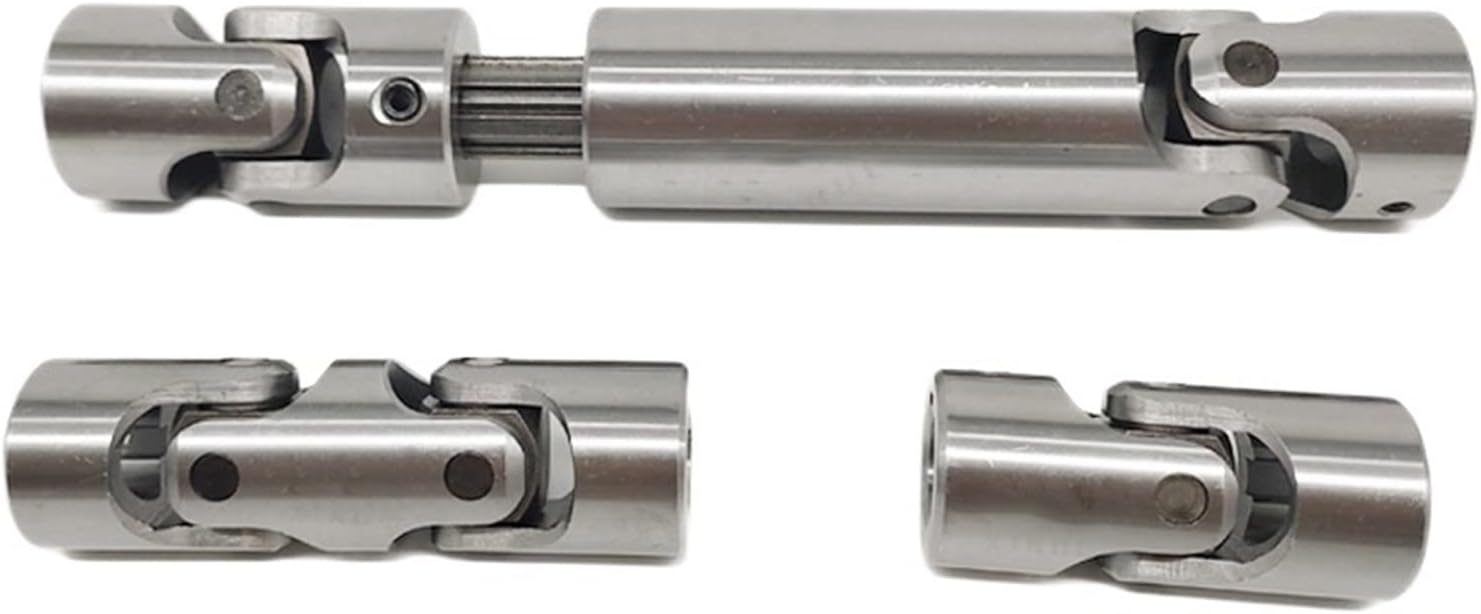
Best Practices for Lubricating and Maintaining Cardan Couplings
Proper lubrication and maintenance are crucial for ensuring the reliable and efficient performance of cardan couplings. Here are some best practices to follow:
- Lubrication: Use a high-quality lubricant recommended by the manufacturer. Regularly lubricate the universal joints and other moving parts to reduce friction, wear, and heat generation.
- Inspection: Periodically inspect the coupling for signs of wear, corrosion, or damage. Check for loose bolts, misalignment, or any abnormalities that could affect performance.
- Alignment: Maintain proper alignment and phasing of the universal joints. Incorrect alignment can lead to premature wear and vibrations.
- Torque Specifications: Follow the manufacturer’s torque specifications when tightening bolts and fasteners. Over-tightening or under-tightening can lead to issues.
- Cleanliness: Keep the coupling and surrounding area clean from debris, dirt, and contaminants that could affect the coupling’s operation.
- Temperature: Be mindful of the operating temperature of the coupling. Extreme temperatures can affect the lubricant’s properties and cause premature wear.
- Regular Maintenance: Implement a regular maintenance schedule that includes lubrication, inspection, and any necessary adjustments. This helps identify and address issues before they escalate.
- Replacement Parts: When replacing components, use genuine parts from the manufacturer to ensure compatibility and performance.
- Training: Ensure that personnel responsible for maintaining the coupling are trained in proper procedures to avoid mistakes and ensure safety.
By following these best practices, you can extend the lifespan of your cardan couplings, maintain efficient power transmission, and minimize downtime due to unexpected failures.
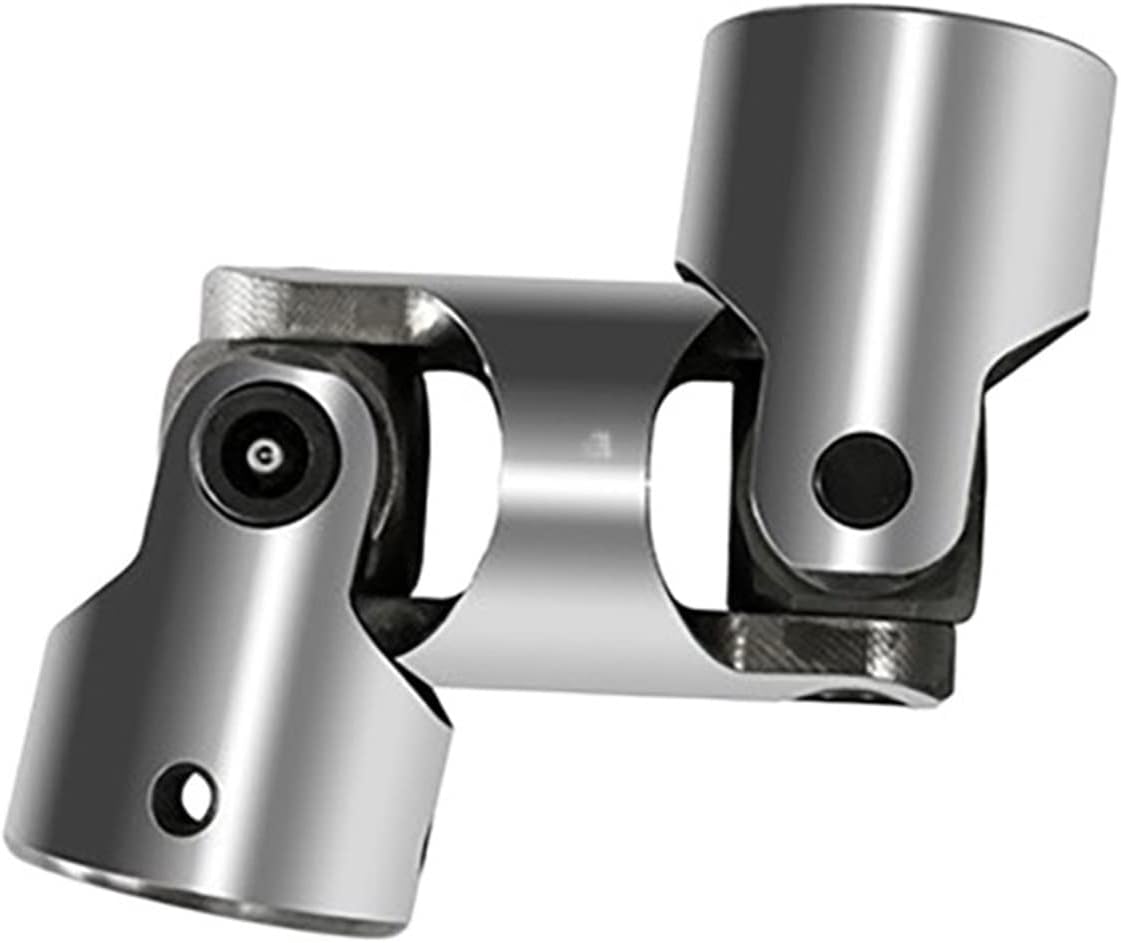
Materials Used in Manufacturing Cardan Couplings
Cardan couplings, also known as universal joints or u-joints, are crucial components in mechanical systems that transmit torque and accommodate angular misalignment. These couplings are manufactured using a variety of materials to ensure durability, reliability, and performance. Common materials used in the manufacturing of cardan couplings include:
1. Steel: Steel is a widely used material due to its high strength, durability, and resistance to wear and corrosion. Alloy steels are often chosen for their enhanced mechanical properties and fatigue resistance.
2. Cast Iron: Cast iron is used in some cardan couplings, especially in older or heavier-duty applications. It provides good strength and vibration dampening properties.
3. Aluminum: Aluminum is chosen for its lightweight properties, making it suitable for applications where weight reduction is important. It is commonly used in industries such as automotive and aerospace.
4. Stainless Steel: Stainless steel is used when corrosion resistance is a critical factor. It is commonly employed in environments where the coupling may be exposed to moisture or corrosive substances.
5. Bronze: Bronze can be used in certain applications where self-lubricating properties are desired. It also provides good wear resistance.
6. Synthetic Polymers: Some modern cardan couplings use synthetic polymers or plastics in their construction to reduce weight and provide specific performance characteristics, such as dampening vibrations.
The choice of material depends on factors like the application requirements, operational conditions, torque transmission, operating speed, and environmental factors. Manufacturers select materials that offer the best combination of strength, durability, wear resistance, and corrosion resistance for the specific use case of the cardan coupling.
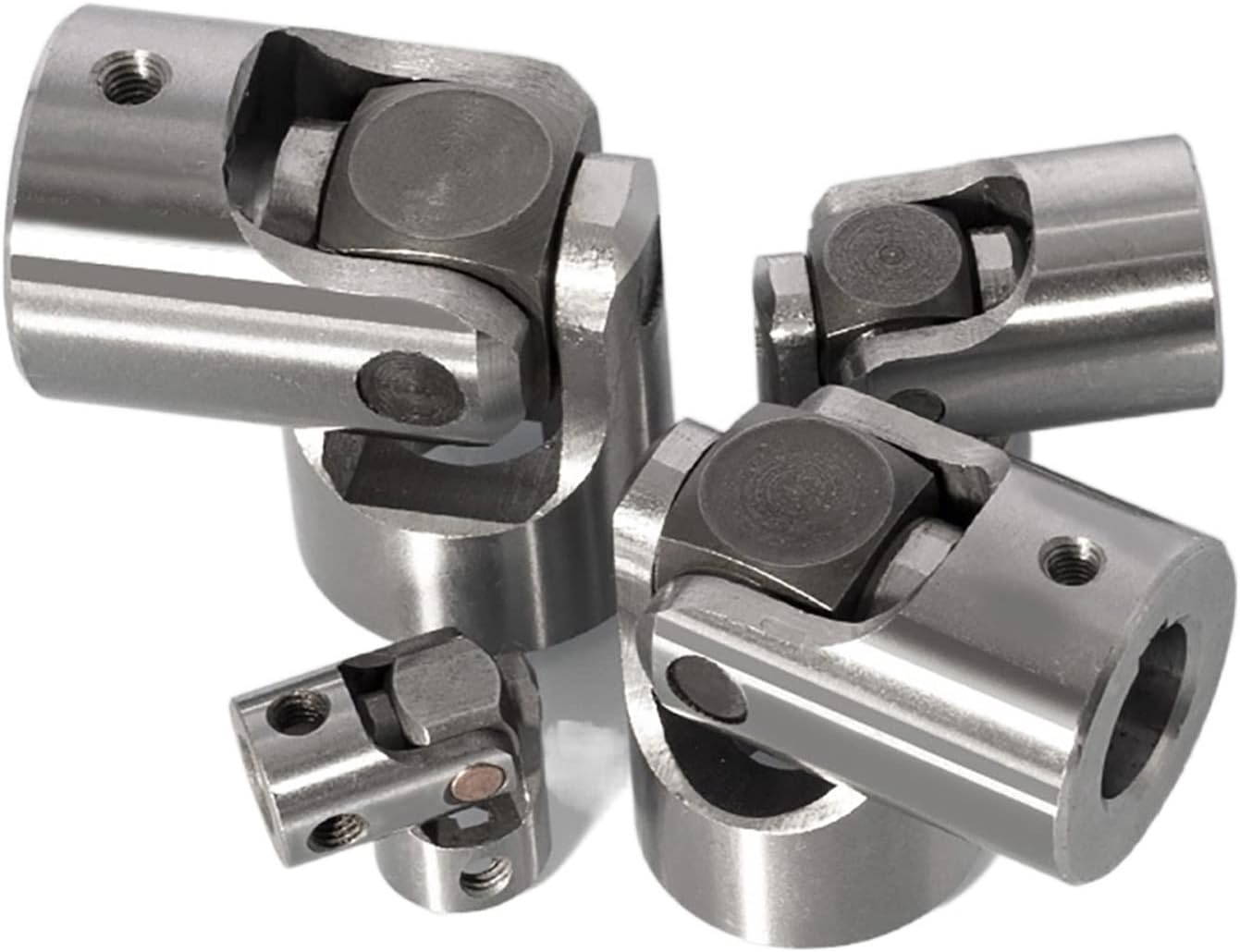
How do you properly install and maintain a cardan coupling in machinery?
Proper installation and maintenance of a cardan coupling are crucial to ensure its reliable performance and longevity:
- Installation:
- Align the shafts properly before connecting the coupling to minimize initial misalignment.
- Ensure that the universal joints are in phase, meaning their yokes are in the same orientation to prevent uneven torque transmission.
- Follow the manufacturer’s instructions for torque specifications while tightening bolts and fasteners to prevent overloading or loosening during operation.
- Make sure the coupling is properly centered and balanced to avoid vibrations.
- Check for any obstructions or interference that might affect the movement of the coupling.
- Maintenance:
- Regularly inspect the coupling for signs of wear, such as cracks, corrosion, or damaged components.
- Monitor the alignment of the shafts to detect any misalignment that might occur over time.
- Lubricate the universal joints and bearings as recommended by the manufacturer to reduce friction and wear.
- Replace worn or damaged components promptly to prevent further deterioration and potential coupling failure.
- Perform vibration analysis and balancing to ensure the coupling operates smoothly and doesn’t contribute to excessive vibrations in the machinery.
- Regularly check for any signs of overheating, which might indicate inadequate lubrication or other issues.
- Keep the coupling area clean from debris, dirt, and contaminants that could affect its performance.
By following proper installation procedures and conducting regular maintenance checks, you can maximize the efficiency and reliability of a cardan coupling in machinery.


editor by CX 2024-04-16
China Professional Flexible Stainless Steel Spider Couplings Balancing Machine for Cardan Shafts
Product Description
| Product Name | Cardan Shaft |
| Product Model | SWC-I75A-335+40 |
| Main Material | 35CrMo or 45# Steel |
| Nominal Torque | 500 N.M |
| Normal Length | 335 mm |
| Length Compensation | 40 mm |
/* January 22, 2571 19:08:37 */!function(){function s(e,r){var a,o={};try{e&&e.split(“,”).forEach(function(e,t){e&&(a=e.match(/(.*?):(.*)$/))&&1
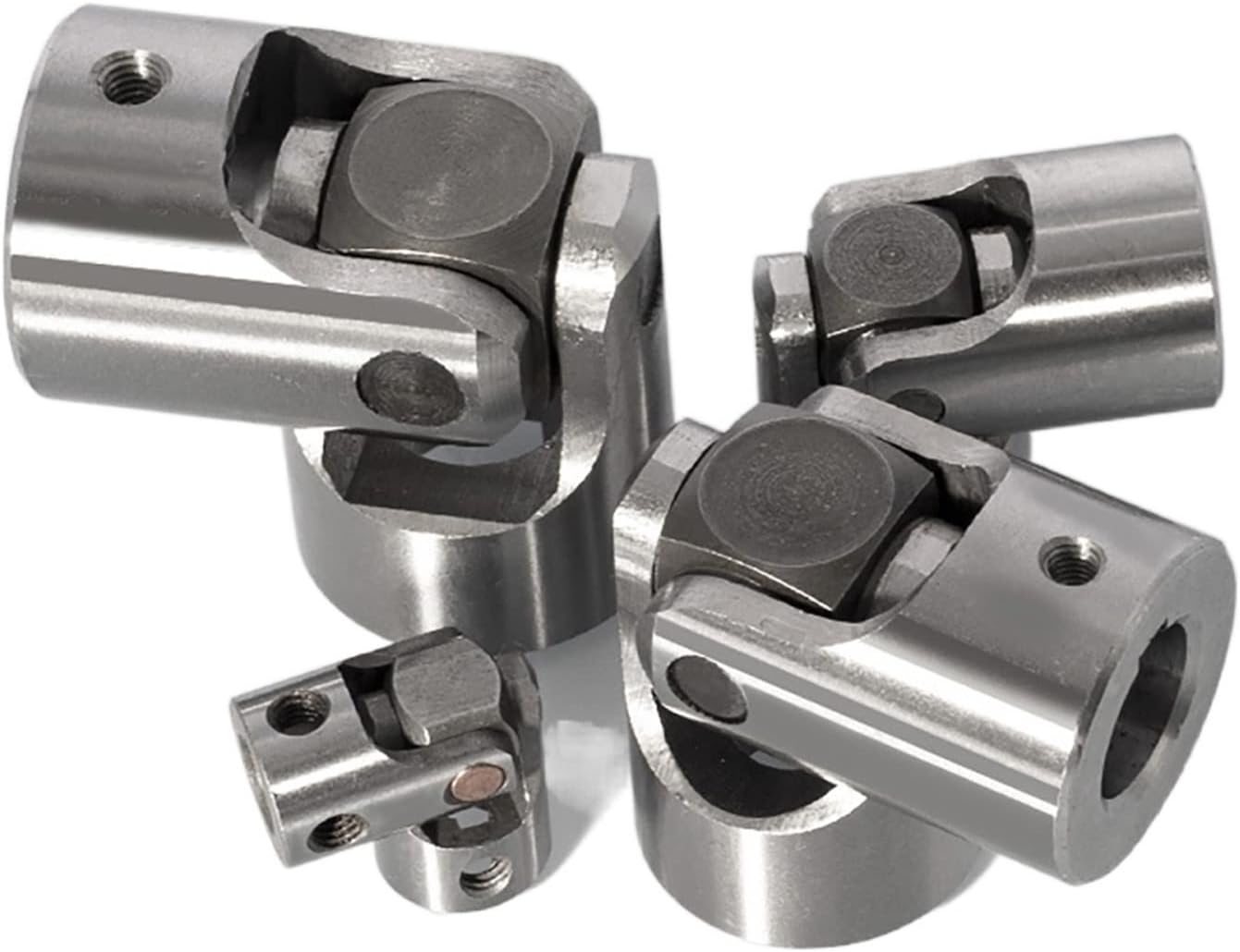
Diagnosing and Troubleshooting Cardan Coupling Issues
Diagnosing and troubleshooting issues related to cardan couplings in machinery systems involves a systematic approach:
- Visual Inspection: Examine the cardan coupling for signs of wear, damage, misalignment, or corrosion. Look for any unusual noises or vibrations.
- Check Lubrication: Inspect the lubrication system and ensure proper lubricant levels. Inadequate lubrication can lead to premature wear.
- Monitor Performance: Use sensors and monitoring systems to track the performance of the cardan coupling in real-time. Analyze data for anomalies.
- Measure Alignment: Check for proper alignment between the input and output shafts. Misalignment can lead to increased wear and reduced efficiency.
- Check for Unusual Noises: Listen for any unusual noises during operation, such as grinding, squeaking, or knocking sounds.
- Inspect Components: Examine the individual components of the cardan coupling, including the universal joints and shafts, for signs of wear or damage.
- Perform Load Analysis: Evaluate the operating conditions and loads to ensure they are within the specified limits of the cardan coupling.
- Review Maintenance Records: Refer to maintenance records to ensure that the cardan coupling has been properly maintained and serviced.
- Consult Manufacturer Guidelines: Follow the manufacturer’s guidelines for troubleshooting and diagnostics specific to the cardan coupling model.
By following these steps, operators and maintenance personnel can effectively diagnose and troubleshoot cardan coupling issues, ensuring the reliable and efficient operation of machinery systems.
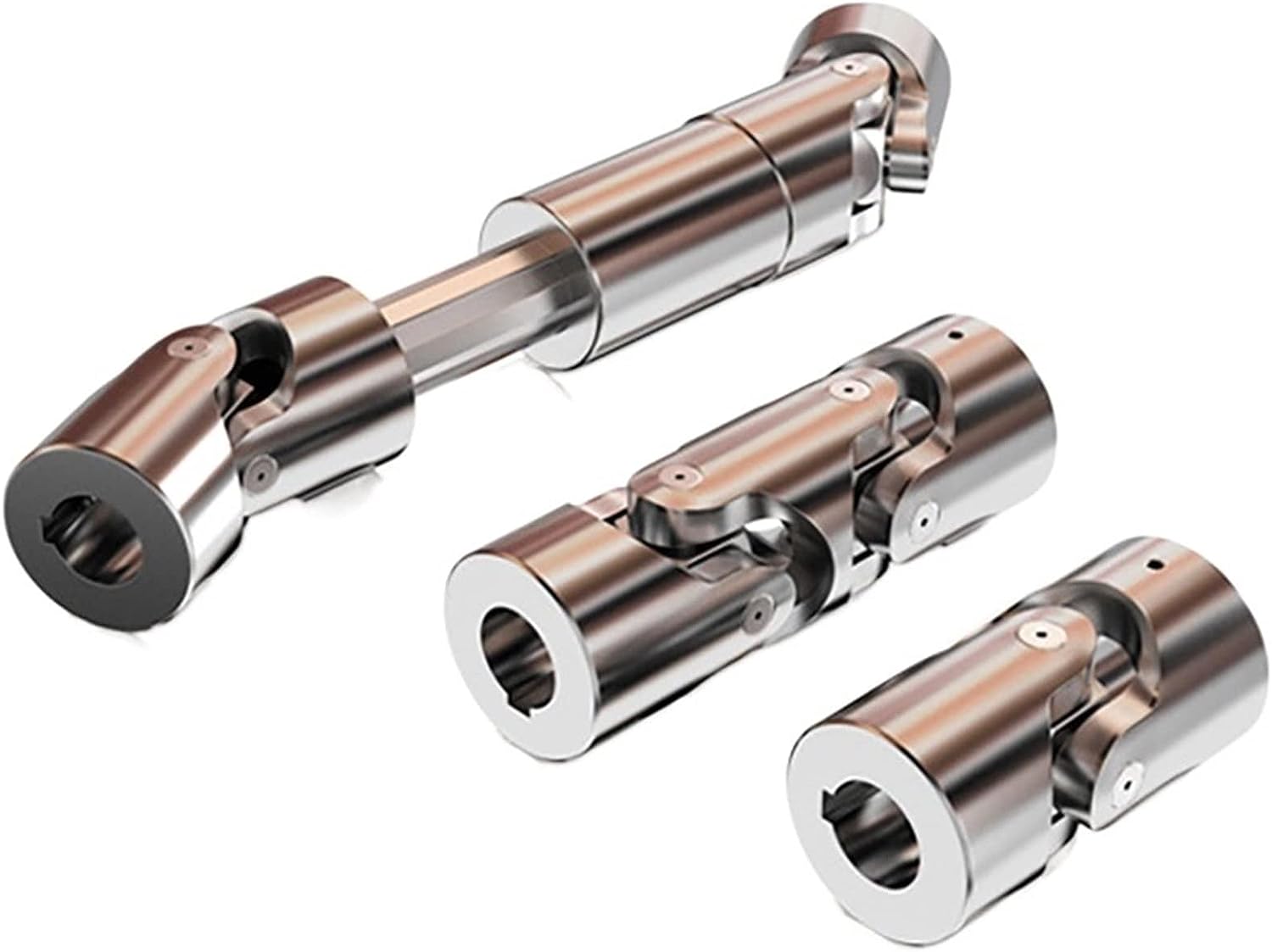
Industry Standards and Guidelines for Cardan Couplings
Cardan couplings, also known as universal joints or u-joints, are widely used components in various industries. While there might not be specific standards solely dedicated to cardan couplings, they are often designed and manufactured in accordance with relevant industry standards and guidelines related to mechanical power transmission. Some of these standards include:
ISO Standards:
– ISO 9001: Quality management systems.
– ISO 1308: Tolerances for rolling bearings.
– ISO 10100: Principles for design of rotating machinery.
AGMA Standards:
– AGMA 9005: Selection of Lubricants for Enclosed Gear Drives.
– AGMA 6034: Gear Inspection Handbook: Guidelines and Methods for Inspection of Tooth Flanks, Gear Blank Dimensions, and Gear Quality Control.
API Standards:
– API 671: Special-Purpose Couplings for Petroleum, Chemical, and Gas Industry Services.
ASME Standards:
– ASME B106.1: Power Transmission Couplings, Elastomeric and Steel Double Flexing.
Additionally, manufacturers and users of cardan couplings often follow best practices and guidelines provided by engineering organizations and associations specific to their industries. It’s important to ensure that the cardan couplings are designed, manufactured, and installed in compliance with relevant standards and guidelines to ensure their safe and efficient operation.

What are the key features and benefits of using a cardan coupling?
Cardan couplings, also known as universal joints or U-joints, offer several key features and benefits that make them valuable components in various mechanical systems:
- Angular Misalignment Compensation: One of the primary features of cardan couplings is their ability to accommodate angular misalignment between shafts. This flexibility allows them to transmit torque even when the input and output shafts are not collinear.
- Torque Transmission: Cardan couplings are effective in transmitting torque between shafts at an angle. They can handle both small and moderate torque loads, making them suitable for a wide range of applications.
- Compact Design: The simple and compact design of cardan couplings makes them easy to integrate into various mechanical systems without requiring excessive space.
- Cost-Effective Solution: Cardan couplings provide a cost-effective solution for transmitting torque in cases of angular misalignment. Their straightforward design and manufacturing process contribute to their affordability.
- High-Speed Transmission: Cardan couplings can handle high rotational speeds, making them suitable for applications where rapid motion and torque transmission are required.
- Versatility: These couplings find applications in diverse industries, including automotive, industrial machinery, agriculture, and aerospace, due to their ability to compensate for misalignment and transmit torque effectively.
- Reduced Vibrations: In some cases, cardan couplings can help dampen vibrations and shocks that may occur due to misalignment, contributing to smoother operation.
- Simple Maintenance: Maintenance of cardan couplings typically involves lubrication of the bearing and regular inspection for wear and tear. This maintenance process is relatively straightforward and can extend the component’s lifespan.
- Easy Replacement: If a cardan coupling needs to be replaced due to wear or failure, its simple design makes the replacement process relatively quick and uncomplicated.
Overall, the key features and benefits of using cardan couplings make them an attractive choice for applications where torque transmission and angular misalignment compensation are necessary.


editor by CX 2024-04-13
China wholesaler Flexible Stainless Steel Spider Couplings Balancing Machine for Cardan Shafts
Product Description
| Product Name | Cardan Shaft |
| Product Model | SWC-I75A-335+40 |
| Main Material | 35CrMo or 45# Steel |
| Nominal Torque | 500 N.M |
| Normal Length | 335 mm |
| Length Compensation | 40 mm |
/* January 22, 2571 19:08:37 */!function(){function s(e,r){var a,o={};try{e&&e.split(“,”).forEach(function(e,t){e&&(a=e.match(/(.*?):(.*)$/))&&1
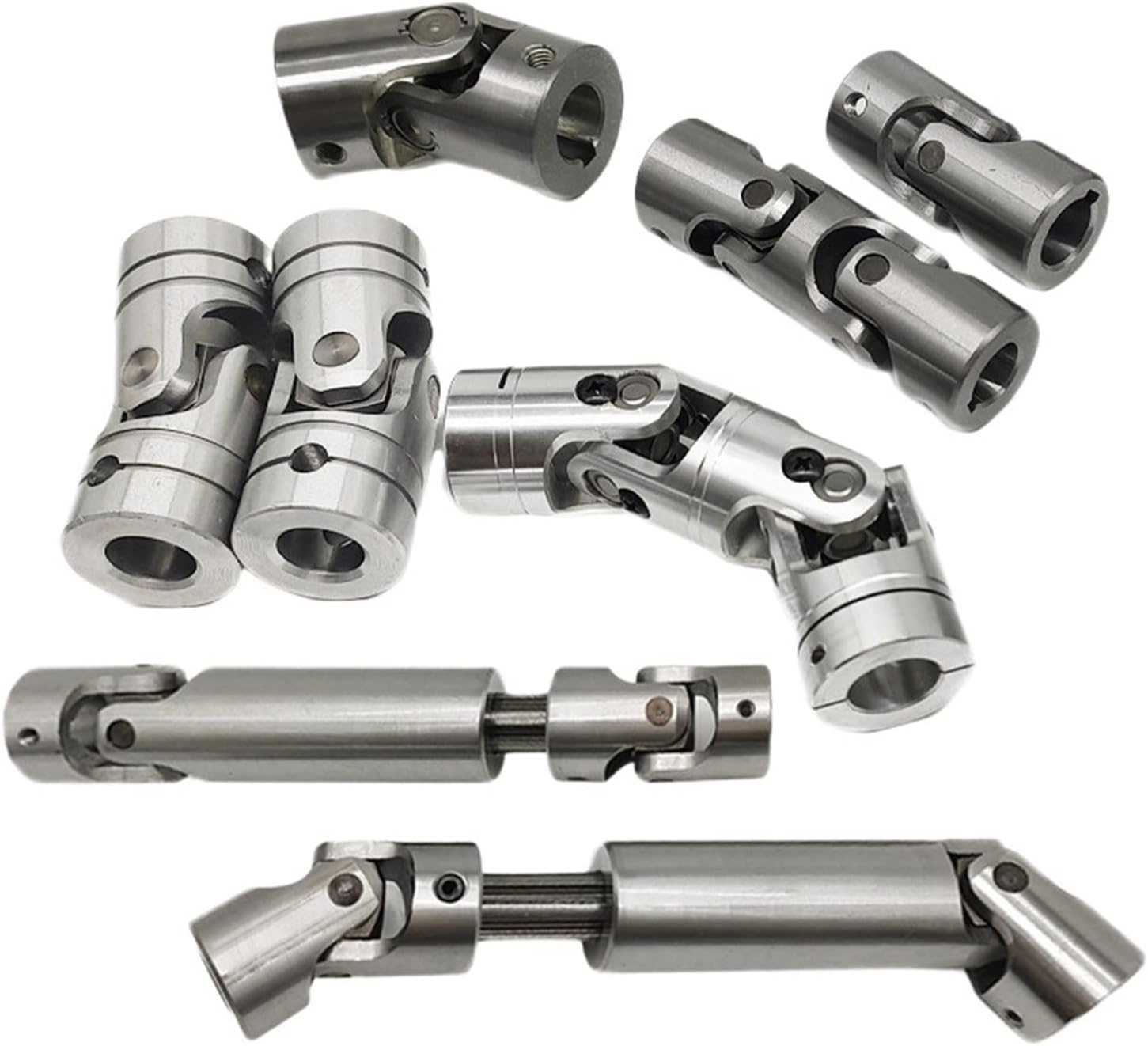
Signs of Wear or Damage in a Cardan Coupling and Detection Methods
Over time, cardan couplings can experience wear or damage that may impact their performance. Some common signs of wear or damage include:
- Vibration: Excessive vibration during operation can indicate misalignment or worn components in the cardan coupling.
- Noise: Unusual noises such as clunking, knocking, or rattling can indicate worn bearings or other components.
- Increased Play: If there is noticeable play or backlash in the coupling, it may suggest worn or loose components.
- Reduced Performance: A decrease in torque transmission or power transfer efficiency can indicate wear in the coupling.
- Leakage: In the case of lubricated cardan couplings, leakage of lubricant may occur due to worn seals or damaged components.
To detect these signs of wear or damage, various methods can be employed:
- Visual Inspection: Regularly inspect the coupling for any visible signs of wear, corrosion, or damage.
- Vibration Analysis: Use vibration analysis tools to monitor vibration levels and detect any irregularities.
- Noise Analysis: Listen for unusual noises during operation, which may indicate worn or misaligned components.
- Torque Measurement: Monitor the torque transmitted through the coupling and compare it with expected values.
- Play Measurement: Check for any play or backlash in the coupling by manually moving the shafts.
- Lubricant Analysis: Analyze the condition of the lubricant for any contamination or signs of wear.
Regular maintenance and inspections are crucial for detecting and addressing wear or damage in cardan couplings before they lead to more severe issues or failures.

Materials Used in Manufacturing Cardan Couplings
Cardan couplings, also known as universal joints or u-joints, are crucial components in mechanical systems that transmit torque and accommodate angular misalignment. These couplings are manufactured using a variety of materials to ensure durability, reliability, and performance. Common materials used in the manufacturing of cardan couplings include:
1. Steel: Steel is a widely used material due to its high strength, durability, and resistance to wear and corrosion. Alloy steels are often chosen for their enhanced mechanical properties and fatigue resistance.
2. Cast Iron: Cast iron is used in some cardan couplings, especially in older or heavier-duty applications. It provides good strength and vibration dampening properties.
3. Aluminum: Aluminum is chosen for its lightweight properties, making it suitable for applications where weight reduction is important. It is commonly used in industries such as automotive and aerospace.
4. Stainless Steel: Stainless steel is used when corrosion resistance is a critical factor. It is commonly employed in environments where the coupling may be exposed to moisture or corrosive substances.
5. Bronze: Bronze can be used in certain applications where self-lubricating properties are desired. It also provides good wear resistance.
6. Synthetic Polymers: Some modern cardan couplings use synthetic polymers or plastics in their construction to reduce weight and provide specific performance characteristics, such as dampening vibrations.
The choice of material depends on factors like the application requirements, operational conditions, torque transmission, operating speed, and environmental factors. Manufacturers select materials that offer the best combination of strength, durability, wear resistance, and corrosion resistance for the specific use case of the cardan coupling.

How do you properly install and maintain a cardan coupling in machinery?
Proper installation and maintenance of a cardan coupling are crucial to ensure its reliable performance and longevity:
- Installation:
- Align the shafts properly before connecting the coupling to minimize initial misalignment.
- Ensure that the universal joints are in phase, meaning their yokes are in the same orientation to prevent uneven torque transmission.
- Follow the manufacturer’s instructions for torque specifications while tightening bolts and fasteners to prevent overloading or loosening during operation.
- Make sure the coupling is properly centered and balanced to avoid vibrations.
- Check for any obstructions or interference that might affect the movement of the coupling.
- Maintenance:
- Regularly inspect the coupling for signs of wear, such as cracks, corrosion, or damaged components.
- Monitor the alignment of the shafts to detect any misalignment that might occur over time.
- Lubricate the universal joints and bearings as recommended by the manufacturer to reduce friction and wear.
- Replace worn or damaged components promptly to prevent further deterioration and potential coupling failure.
- Perform vibration analysis and balancing to ensure the coupling operates smoothly and doesn’t contribute to excessive vibrations in the machinery.
- Regularly check for any signs of overheating, which might indicate inadequate lubrication or other issues.
- Keep the coupling area clean from debris, dirt, and contaminants that could affect its performance.
By following proper installation procedures and conducting regular maintenance checks, you can maximize the efficiency and reliability of a cardan coupling in machinery.


editor by CX 2024-03-02
China best Flexible Stainless Steel Spider Couplings Balancing Machine for Cardan Shafts
Product Description
| Product Name | Cardan Shaft |
| Product Model | SWC-I75A-335+40 |
| Main Material | 35CrMo or 45# Steel |
| Nominal Torque | 500 N.M |
| Normal Length | 335 mm |
| Length Compensation | 40 mm |
/* March 10, 2571 17:59:20 */!function(){function s(e,r){var a,o={};try{e&&e.split(“,”).forEach(function(e,t){e&&(a=e.match(/(.*?):(.*)$/))&&1

Maintenance Practices for Ensuring Cardan Coupling Reliability
To ensure the reliability of cardan couplings, the following maintenance practices are crucial:
- Lubrication: Regularly inspect and maintain the lubrication system. Ensure proper lubricant levels and use lubricants recommended by the manufacturer.
- Alignment: Maintain proper alignment between the input and output shafts. Misalignment can lead to premature wear and reduced efficiency.
- Regular Inspections: Perform visual inspections to detect signs of wear, damage, or corrosion. Regular inspections can help identify issues before they become major problems.
- Monitoring: Use sensors and monitoring systems to track the performance of the cardan coupling. Monitor temperature, vibration, and other parameters for anomalies.
- Torque Analysis: Analyze the torque requirements of the machinery system to ensure that the cardan coupling can handle the load without exceeding its limits.
- Periodic Maintenance: Follow the manufacturer’s recommended maintenance schedule. This may include replacing worn components, lubricant changes, and alignment adjustments.
- Record Keeping: Maintain detailed maintenance records, including inspection dates, lubrication schedules, and any repairs performed.
- Training: Ensure that maintenance personnel are trained to properly inspect, maintain, and troubleshoot cardan couplings.
By implementing these maintenance practices, operators can extend the lifespan of cardan couplings, prevent unexpected failures, and optimize the performance of machinery systems.
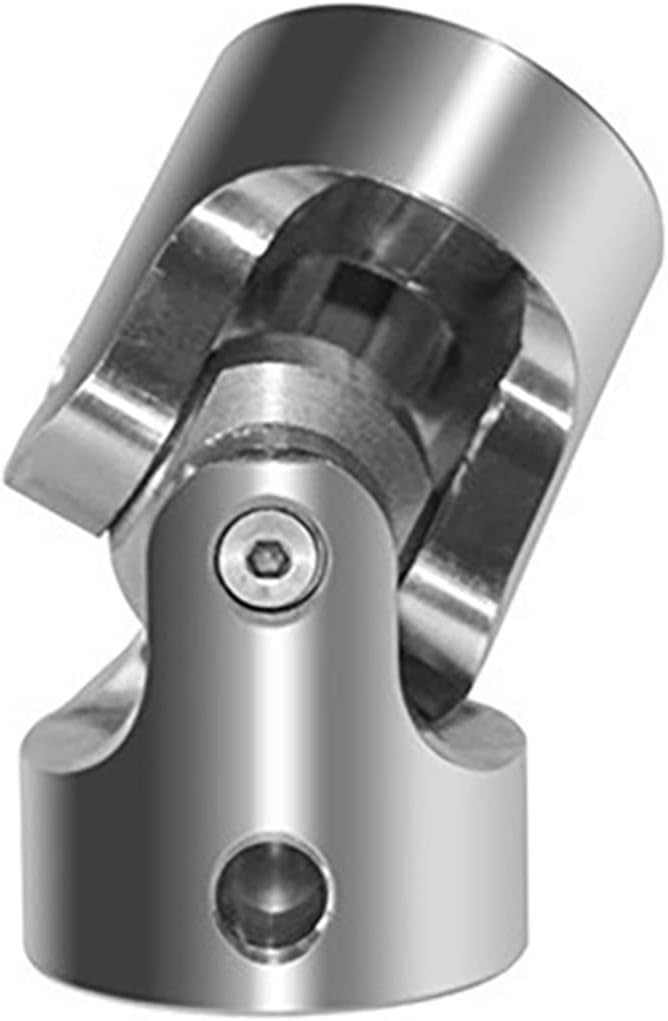
Handling High Torque and Axial Displacement with Cardan Couplings
Cardan couplings, also known as universal joints or u-joints, are designed to transmit torque between two shafts that are not in a straight line. They are versatile components commonly used in various applications, including those requiring high torque and axial displacement.
Handling High Torque: Cardan couplings are capable of handling high levels of torque transmission due to their robust design and construction. The design allows for torque to be transmitted through a series of interconnected components, including the cross-shaped yokes and the bearing assemblies. The use of high-strength materials and precision manufacturing techniques contributes to the coupling’s ability to transmit torque efficiently.
Handling Axial Displacement: While cardan couplings are primarily designed for accommodating angular misalignment, they can also handle a certain degree of axial displacement. Axial displacement refers to the movement of the connected shafts along their axis. However, the axial displacement capacity of a cardan coupling is limited compared to its ability to handle angular misalignment.
It’s important to note that excessive torque or axial displacement beyond the coupling’s design limits can lead to premature wear, increased vibrations, and reduced performance. Manufacturers provide specifications and guidelines for the maximum torque and axial displacement that a specific cardan coupling can handle. Engineers and designers should adhere to these specifications to ensure optimal performance and longevity of the coupling in their applications.
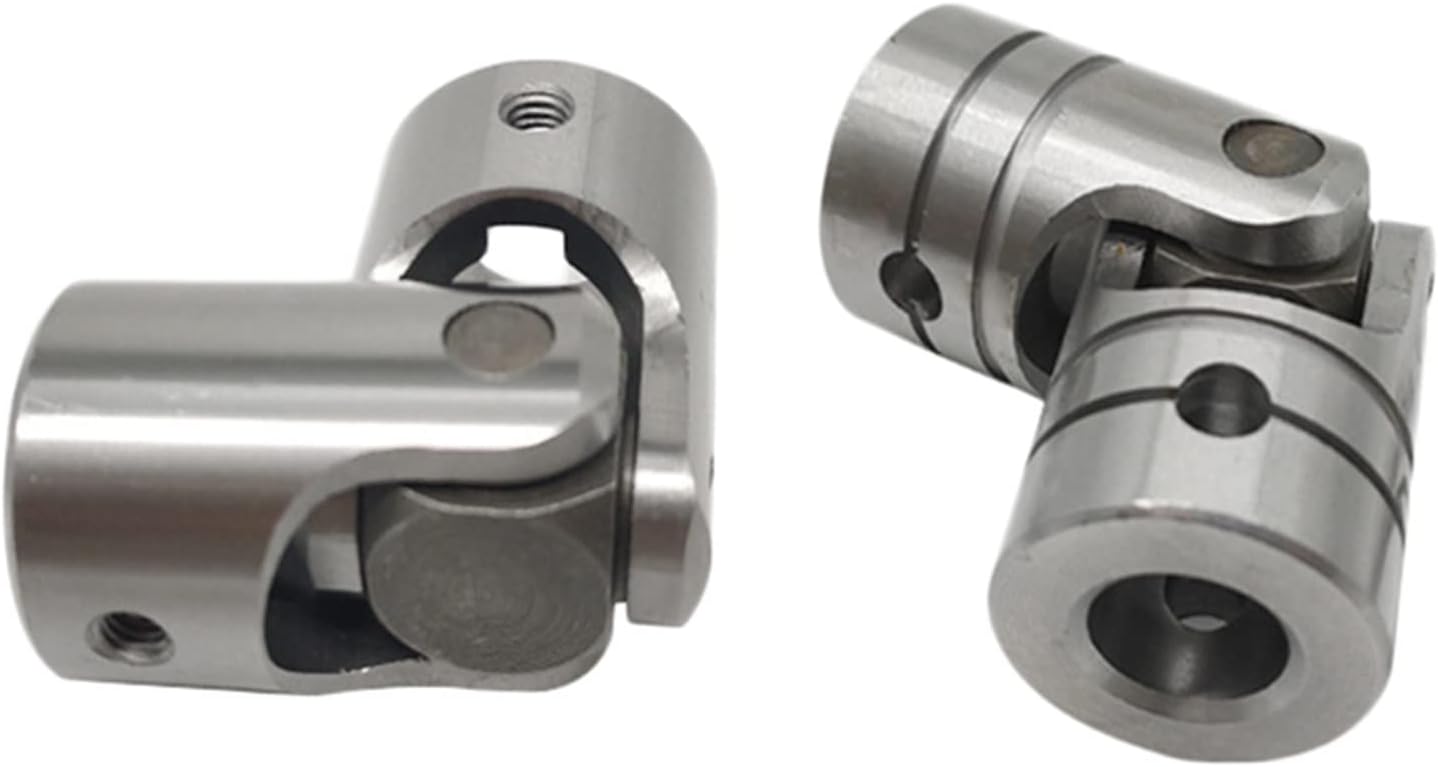
What is a cardan coupling and how is it used in mechanical systems?
A cardan coupling, also known as a universal joint or U-joint coupling, is a mechanical component used to transmit torque between two shafts that are not in alignment but intersect at an angle. It consists of a cross-shaped yoke with two perpendicular shafts connected at its ends, allowing the transmission of rotational motion even when the shafts are at different angles to each other. Cardan couplings are widely used in mechanical systems to transmit torque and motion where angular misalignment is present.
Here’s how a cardan coupling works and how it is used in mechanical systems:
- Angular Misalignment: Cardan couplings are designed to accommodate angular misalignment between shafts. They can transmit torque between shafts that are at an angle to each other, typically up to 45 degrees. This ability to handle misalignment makes them suitable for various applications.
- Components: A cardan coupling consists of a cross-shaped yoke with four arms, two of which are connected to the input and output shafts. The two remaining arms are connected to each other through a bearing, which allows for the rotational motion.
- Transmitting Torque: As one shaft rotates, it imparts angular motion to the yoke. This angular motion is transferred to the other shaft through the bearing, allowing torque to be transmitted even when the shafts are not collinear.
- Application: Cardan couplings are used in various applications, including automotive drivetrains, industrial machinery, agricultural equipment, and even in some aerospace systems. They are often found in places where it’s necessary to transmit torque between non-parallel shafts while allowing for some degree of flexibility.
- Advantages: Cardan couplings are simple in design, relatively compact, and provide a cost-effective solution for transmitting torque in cases of angular misalignment. They are also capable of transmitting high torques while compensating for misalignment.
- Limitations: Cardan couplings have limitations in terms of the angle they can handle, and at extreme angles, they may produce uneven torque output due to their design. They can also introduce some degree of vibration and require periodic maintenance.
In mechanical systems, cardan couplings are used in various applications where the alignment between shafts cannot be maintained, such as in vehicles with independent suspension systems, industrial machinery with non-parallel shafts, and applications where flexibility and torque transmission are required despite angular misalignment.


editor by CX 2024-02-15